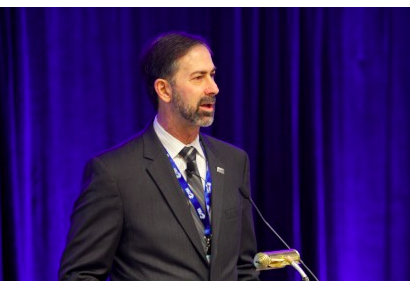There is a Clear Mismatch between Product Development Trends and Real Demand from Large Fund Selectors in Europe
| By Alicia Miguel | 0 Comentarios

The European fund distribution consultant accelerando associates conducts regular surveys capturing the latest insights from both the buy as well as the sales side. In January 2016 accelerando reached out to 60 Global, European and Country Sales Heads across Europe in order to shed light into experienced and forthcoming opportunities and challenges in European fund distribution from the source.
The 2016 survey kicked off with questions on the fund selector’s takes on current product waves. Smart beta dominates headlines. Is the asset management industry smart enough without smart beta? While 53% of the interviewed fund sales people stated that fund selectors consider smart beta concepts to be potentially interesting, 33% said that selectors have a rather skeptical view on smart beta. Only 13% of the survey respondents believe that European gatekeepers consider smart beta funds as a clear value adding proposition.
Responses on multi strategy funds, which seem to be the product developer’s current darling, provided a very similar picture. 60% of the survey respondents said that fund selectors address multi strategy funds very selectively, while 20% believe the gatekeepers look at these funds rather skeptically. “With that, we witness a clear mismatch between product development trends and real demand from large fund selectors“ states Philip Kalus, managing partner of accelerando associates.
Passive and Active
The experienced and also expected growth of the ETF and passive fund space also provides regular industry headlines. However, how do European investors play out these funds? Cheap core exposure, tactical plays or cheap replacement for active funds? The survey outcome provides a mixed picture with leading scores for cheap core exposure (45%) and tactical plays (41%). Only 14% see ETFs as a threat to active funds based on replacements. “This demonstrates well again, that the question is not active versus passive, it is both. High alpha active funds will be always in demand. However, the picture is different for so called closet-tracker funds“ says Charles Velie, researcher at accelerando.
Covering the demand or doing the best?
Many asset managers roll out new products on a regular basis to ensure further asset gathering, while most fund selectors want asset managers to focus on what they are best in. So, is this creating a conflict of interest for fund sales staff? Interestingly, not for the majority of senior sales people interviewed. However, individual comments suggest that some sales people can afford to ignore product campaigns to a certain extent and that they only focus their activities on the very best offering. Nevertheless, for 38% it is a clear conflict.
Equity year?
2016 should be the year for equity funds – at least when it comes to the majority of early year asset manager statements. In stark contrast, 63% of the survey respondents believe that this is rather wishful thinking and that fund selectors will keep their powders dry.
There has also been a lot of talk about increased price pressure from European fund buyers recently. However, the accelerando survey suggests that price pressure in Europe has only increased moderately with a score of 53%, while 31% state that price dynamics have more or less stayed the same in recent years. “It is about adequate fee levels. Investors are willing to pay fees for quality“, concludes accelerando.
Fund selectors requirements
Most fund selectors have high minimum requirements in terms of assets under management in a target fund, which makes initial asset gathering outside captive channels hard for new fund launches and small boutiques.
Within the alternative world, in particular in private equity, club deals – investors joining forces to invest at early stage – are common. Within traditional fund distribution / fund selection this seems far from reality yet. 70% of the survey respondents have never witnessed it, while 27% have experienced fund selector club deals in a very limited amount only. “This is certainly something asset managers should promote more. It is a win-win. Selectors can access new funds and emerging talents at an early stage and promoters gain sufficient size“ states Philip Kalus.
Overcrowded?
Europe is overcrowded in terms of the number of fund promoters and funds available, says the study. Fund selectors have plenty of choice in any given asset class. At the same time operational and due diligence efforts have increased. A widespread move away from open towards guided / limited architecture has already been witnessed by the majority of accelerando’s survey respondents in the 2014 and 2015 surveys. 2016 does not come along differently. Only 7% stated that fund selectors do not intend to work with less funds / less fund providers.
The state of the industry
The asset management industry has increasingly come under pressure by troubling headlines. How about the perception of the state of the industry by European fund selectors? 63% of the senior sales people interviewed believe the perception is good, but not good enough, while 27% stated the perception is poor. The asset management industry has over-promised and under-delivered too often. Only 10% believe the perception is very good.
Digitalization
accelerando associates are firm believers that fund selectors want to access everything they need anytime from anywhere. Digitalization matters. 50% of the survey respondents believe that digitalization has nowadays a very high importance in marketing and communication to fund selectors, while 47% give it high, but early stage importance. Interestingly, 50% state that their employers do not encourage them to apply more digital contacts versus face to face meetings. “We expect this to change dramatically in the forthcoming years. Old-school sales models run high costs and a lot of unproductive time traveling to and in between investor meetings“ states Charles Velie from accelerando.
How about fund sales expectations for 2016? 67% of the survey respondents expect a good, but challenging year ahead, while 27% expect a challenging year indeed. Only 7% expect 2016 to be a good year indeed in terms of fund sales. Optimism looks different.






